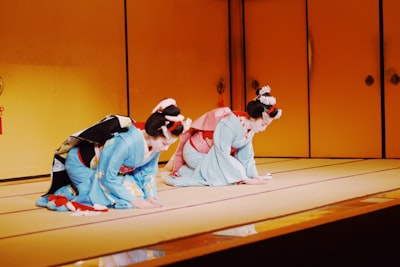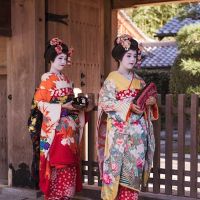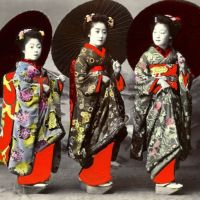The Art of the Maiko: Stage Performances and Acting
S-fleage
S-fleage is a Kyoto-based company. We are proud to introduce the charms of Kyoto to the world. We hope this article will help you to experience Kyoto.
Latest posts by S-fleage (see all)
Maiko, apprentice Geisha, are not only symbols of grace and beauty but also skilled performers dedicated to preserving traditional Japanese arts.
Their stage performances and acting bring to life the elegance and cultural heritage of Japan, captivating audiences with their artistry and dedication.
Contents
History of Maiko
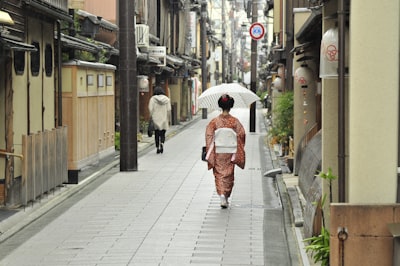
Maiko, or apprentice geisha, have been an iconic part of Kyoto’s cultural landscape for centuries.
Their origins can be traced back to the Edo period (1603-1868) when young girls began serving tea to travelers around Yasaka Shrine.
Initially, mizuchaya (tea houses) served only tea and dango (rice dumplings), but eventually, they began offering sake and food as well.
The young women working there started to perform shamisen music and dances, imitating Kabuki theater.
Today, maikos continue to train rigorously in traditional arts such as dance, music, and tea ceremony, preserving centuries-old customs while adapting to modern times.
Traditional Maiko Dances
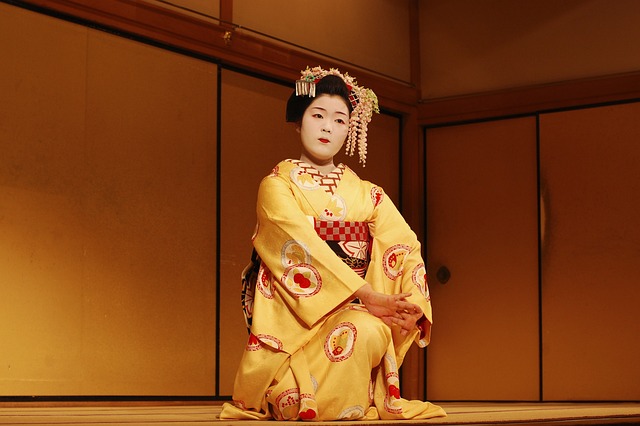
Maiko dances are a captivating blend of grace, precision, and traditional Japanese artistry.
Each performance tells a story, often portraying scenes from nature or classic Japanese tales.
Influenced by classical Japanese dance forms like Nihon Buyō and Kabuki, Maiko dances emphasize rhythm, balance, and expressive movements, allowing them to convey deep emotion and cultural heritage through their art.
Description of dances performed by Maiko
Maiko dances often portray scenes from nature, historical events, or classic Japanese tales.
Each movement is deliberate and fluid, with Maikos using fans, scarves, and other props to enhance the storytelling aspect of their performance.
The dances are characterized by subtle gestures and intricate footwork that convey deep emotion and meaning.
The influence of classical Japanese dance on Maiko performances
The performances of Maikos are deeply rooted in classical Japanese dance forms, such as Nihon Buyō and Kabuki.
These influences are evident in the controlled movements and dramatic expressions of Maiko dances.
Nihon Buyō, in particular, emphasizes rhythm, balance, and the use of space, which are essential components of Maiko performances.
This rich tradition provides the foundation for the Maiko’s ability to convey complex emotions and stories through dance.
The Maiko Stage: Settings and Venues
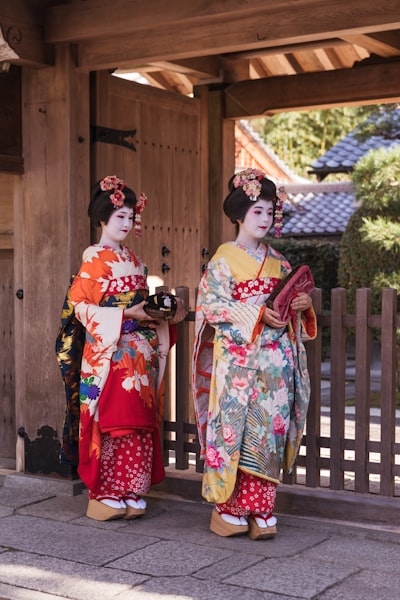
Maikos perform in various venues, ranging from intimate restaurants or tea houses, known as ochaya, to larger theaters in Kyoto’s Gion district.
Each venue offers a unique atmosphere that enhances the audience’s experience of traditional Japanese arts.
The settings provide an authentic backdrop for Maiko performances, where audiences can appreciate the intricate artistry and cultural significance of their dance and acting.
Overview of the different venues where Maiko perform
Maiko performances are held in various venues, each offering a unique setting for audiences to experience their art.
Traditional tea houses, known as ochaya, are intimate spaces where Maikos entertain guests with dance and music.
Larger venues, such as theaters in Kyoto’s Gion district, host seasonal dance performances that showcase the skills of Maikos and Geikos.
These venues provide an authentic atmosphere for audiences to appreciate the traditional arts.
The atmosphere and audience experience at a Maiko performance
Attending a Maiko performance is a captivating experience that transports the audience to a world of tradition and elegance.
The atmosphere is one of reverence and appreciation for the delicate artistry on display.
Audiences are sometimes seated on tatami mats, enhancing the intimate and immersive experience.
The Maiko’s graceful movements and expressive gestures captivate spectators, creating a memorable cultural experience that reflects the beauty and depth of Japanese tradition.
Representative Performances and Their Highlights
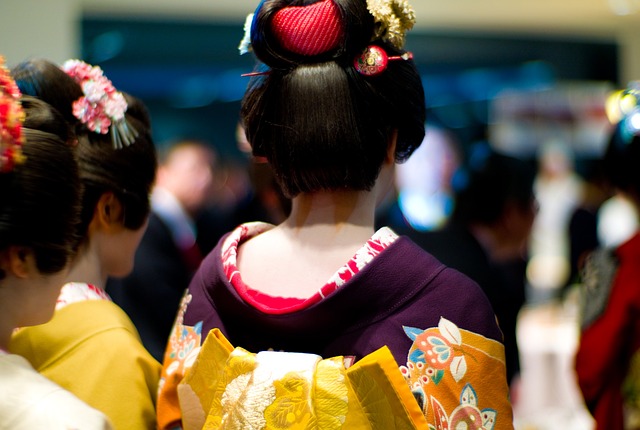
Let me introduce some of the representative performances danced by maiko.
Each performance is carefully crafted to showcase their artistic skills.
Gion Kouta and Kamogawa Kouta
Gion Kouta and Kamogawa Kouta are traditional songs performed by Maikos, highlighting the beauty and charm of Kyoto.
These pieces feature delicate choreography that complements the lyrical melodies, allowing Maikos to express the essence of Kyoto’s cultural heritage.
The performances are characterized by graceful gestures and fluid movements that capture the spirit of Kyoto and its rich history.
These works have been iconic representations of Kyoto since the early Showa era and continue to be celebrated today.
Kyoto’s Four Seasons
Kyoto’s Four Seasons is a dance performance that celebrates the natural beauty and cultural traditions of Kyoto throughout the year.
Each season is represented by unique choreography and music, reflecting the changing landscapes and customs.
The performance showcases the versatility and artistry of Maikos as they transition seamlessly between the different seasonal themes, bringing the beauty of Kyoto to life on stage.
Rokudan Kuzushi
Rokudan Kuzushi is an arrangement of the koto piece “Rokudan no Shirabe” into a hauta (short song).
The term “kuzushi” refers to the act of arranging or adapting a piece.
Alongside the Gion Kouta, this dance is a must-learn for geikos and maikos.
It is a beautiful performance, filled with graceful movements and stunning visual appeal.
Natsu wa Hotaru (Summer Fireflies)
Natsu wa Hotaru is a summer-themed dance that evokes the enchanting atmosphere of a night filled with fireflies.
The performance captures the essence of summer through fluid movements and gentle gestures that mimic the flickering lights of fireflies.
The Maiko’s delicate expressions and elegant use of props create a mesmerizing performance that transports the audience to a serene summer evening.
Ume wa Saitaka
Ume wa Saitaka is a hauta (a type of Japanese short song) based on the popular folk tune “Shongaebushi,” which was widely enjoyed from the early Edo period to the early Meiji period.
The song compares geishas of the karyūkai (flower and willow world) to seasonal flowers.
Today, it is well-known as an ozashiki (banquet) song.
The Art of Expression: Maiko Acting

Acting is an essential element of Maiko performances, allowing them to convey stories and emotions through expressions, gestures, and body language.
Explanation of the acting component in Maiko performances
An important aspect of maiko performances includes subtle facial expressions, precise gestures, and captivating body language, which enhance the storytelling and bring characters and scenes to life.
These elements of performance are essential for creating a connection with the audience and increasing the overall impact of the performance.
Key elements of Maiko acting: facial expressions, gestures, and body language
Maiko acting relies on facial expressions, gestures, and body language to convey emotions and tell stories.
Subtle changes in expression can communicate a wide range of emotions, from joy and love to sadness and longing.
Gestures are carefully choreographed to complement the music and enhance the narrative.
Body language plays a crucial role in creating the mood and atmosphere of the performance, allowing Maiko to captivate and engage the audience.
Importance of storytelling in Maiko performances
Storytelling is at the heart of Maiko performances, with each dance and song conveying a unique narrative.
The ability to tell a story through movement and expression is a testament to the Maiko’s artistry and skill.
Storytelling allows the audience to connect with the performance on a deeper level, creating a memorable and meaningful experience that highlights the cultural richness of the Maiko tradition.
The Elegance of Traditional Maiko Dances
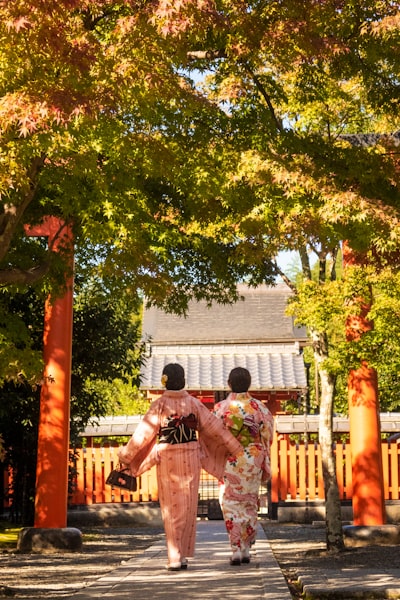
The art of the Maiko is a testament to the enduring beauty and elegance of traditional Japanese performance.
Through their dedication to dance and acting, Maikos preserve and celebrate the cultural heritage of Japan.
Their performances offer a glimpse into a world of grace and artistry, where each movement tells a story and every expression captures the essence of Japanese tradition.
As custodians of this rich heritage, Maikos continue to enchant and inspire audiences with their timeless elegance and dedication to the art of performance.

